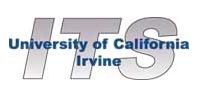|
The Center for Activity Systems Analysis was established within the
Institute of Transportation Studies,
Irvine to provide a focus for research in activity-based approaches for
transportation modeling and to foster further interdisciplinary research
in this and related areas. For over 25 years, CASA research associates
have been on the leading edge of evolving research in activity systems
analysis, establishing an international reputation in the study of complex
travel behavior, activity-base approaches, agent-based models, microsimulation
approaches, data collection technologies, and empirical modeling.
This work has benefitted from continuous funding from such agencies as
the National Science Foundation, the Federal Highway Administration, the
California Department of Transportation, and the U.S. Department of
Transportation's University Transportation Centers Program, as well as
the support of private sector firms. Prior work has included:
(a) the application of pattern recognition techniques to activity pattern classification;
(b) the development of STARCHILD, the first operational activity-based model;
(b) development of joint models of activity and travel demand using structural equations models;
(d) microsimulation of activity patterns to produce dynamic origin-destination matrices; and
(e) development of the Household Activity Pattern Problem (HAPP) Model.
Current efforts include:
|



